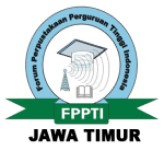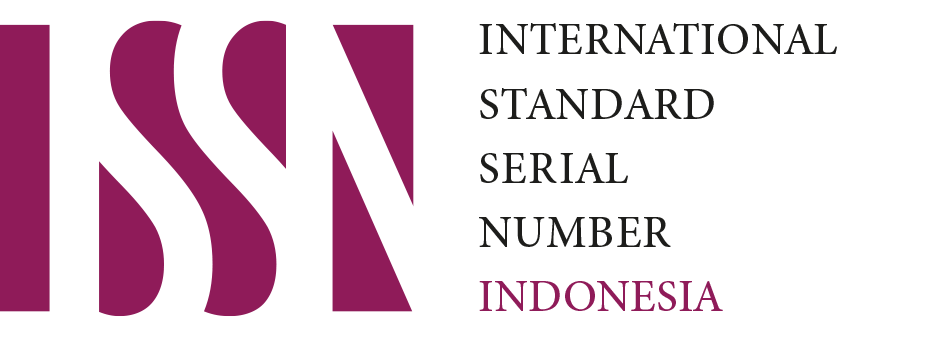Implementation of the library automation system in high schools in Surabaya City
Downloads
Background of the study: High school-level school libraries in the city of Surabaya have begun to develop services and facilities, one of which is by building a library automation system. Problems arise about the orientation of the development carried out whether it aims to build benefits or only to meet the needs of the library.
Purpose: The purpose of this study is to describe the implementation of the library automation system development that has been carried out by senior high schools in the city of Surabaya
Method: The method used in this research is a quantitative approach focusing on the type of descriptive quantitative. The study used a sample of 60 respondents taken from a specified population of 266 high school library managers. The sampling technique used snowball sampling, then data collection using a questionnaire distributed via google form over three weeks.
Findings: all variables used gave positive results because the value of the mode generated from each variable showed an answer which could mean that the respondents agreed with the variables that supported the implementation of the high school library automation system in Surabaya.
Conclusion: This study resulted in the finding that the library manager has carried out the implementation because of the benefits generated by the library automation system.
Downloads
Asari, A., Kurniawan, T., & Andajani, K. (2020). Penerapan Manajemen Perpustakaan Sekolah Berbasis Otomasi Inslislite. Bibliotika: Jurnal Kajian Perpustakaan Dan Informasi, 4(2). Retrieved from http://journal2.um.ac.id/index.php/bibliotika/article/view/17567
Aswinna, & Rahmi. (2021). Open access under Creative Commons Attribution-Share A like 4.0 International License (CC-BY-SA) Record and Library Journal Use of Electronic Resources Before and During the Pandemic in the Universitas Indonesia Library. Record and Library Journal, 7(2), 215–227. Retrieved from https://e-journal.unair.ac.id/index.php/RLJ
Azwar, M. (2015). Penerapan Sistem Otomasi di Perpustakaan Fakultas Adab dan Humaniora UIN Alauddin Makassar. Jurnal Al-Kuttab, 2(1), 45–67. https://doi.org/https://doi.org/10.24952/ktb.v2i1.549
Bwalya, T., Mwalimu, E. C., & Nyirenda, E. (2019). Library automation in school libraries and media centres in Zambia: case study of selected schools in Lusaka city. Retrieved April 11, 2021, from Unza Repository website: http://palevel.unza.zm/handle/123456789/6045
Das, D., & Chartterjee, P. (2015). Library Automation: an Overview. International Journal of Research in Library Science, 1(1), 1–7. Retrieved from http://www.ijrls.in/wp-content/uploads/2015/07/LIBRARY-AUTOMATION-AN-OVERVIEW.pdf.
Khoriyah, E. M., & Haq, M. S. (2020). Implementasi Sistem Otomasi Perpustakaan Berbasis LARIS (Library Automation Retrieval Information System). Jurnal Administrasi, Kebijakan Dan Kepemimpinan Pendidikan, 1(1), 1–11. Retrieved from https://ojs.unm.ac.id/JAK2P/article/download/10374/pdf
Maharazu, N., & Malumfashi, S. H. (2021). Adoption of Koha Integrated Library System (ILS) for the automation of Umaru Musa Yar'adua University Library, Katsina, Nigeria: problems and prospects. Asian Journal of Information Science and Technology, 11(1), 9–14. https://doi.org/10.51983/ajist-2021.11.1.2657
Mahedy, K. S. (2015). Implementasi Otomasi Layanan Perpustakaan Dengan SLiMS (Senayan Library Automation System) di Perpustakaan UNDIKSHA. Jurnal Pendidikan Teknologi Dan Kejuruan, 12(1), 1–6. https://doi.org/http://dx.doi.org/10.23887/jptk-undiksha.v12i1.4896
Mulyadi. (2016). Pengelolaan Otomasi Perpustakaan Berbasis Senayan Library Management System (SLiMS). Jakarta, Indonesia: Rajawali Pers.
Puritat, K., Julrode, P., Ariya, P., Sangamuang, S., & Intawong, K. (2021). Book recommendation for library automation use in School Libraries by multi features of support vector machine. International Journal of Advanced Computer Science and Applications, 12(4), 190–196. https://doi.org/10.14569/IJACSA.2021.0120426
Purwinarko, A., Hardyanto, W., & Adhi, M. A. (2019). Development of integrated library automation system: A case study of Universitas Negeri Semarang. Journal of Physics: Conference Series, 1321(3). https://doi.org/10.1088/1742-6596/1321/3/032021
Putri, R. I. I., Araiku, J., & Sari, N. (2020). Statistik Deskriptif. Palembang: Bening Media Publishing.
Riyanto, S., & Hatmawan, A. A. (2020). Metode Riset Penelitian Kuantitatif Penelitian di Bidang Manajemen, Teknik, Pendidikan dan Eksperimen. Yogyakarta: Deepublish.
Rizal, S. H., Syodik, J., & Mochamad Hasyim. (2022). Assistance in Library Management Based on the Senayan Library Management System (SliMS) at SMA Darut Taqwa Purwosari. Soeropati, 4(2), 116–134. https://doi.org/10.35891/js.v4i2.3161
Sugiyono. (2019). Metode Penelitian Kuantitatif. Bandung: Alfabeta.
Copyright (c) 2023 Dian Kristyanto, Yanuastrid Shintawati

This work is licensed under a Creative Commons Attribution-ShareAlike 4.0 International License.
Record and Library Journal by Unair is licensed under a Creative Commons Attribution-ShareAlike 4.0 International License.
1. The journal allows the author to hold the copyright of the article without restrictions.
2. The journal allows the author(s) to retain publishing rights without restrictions
3. The legal formal aspect of journal publication accessibility refers to Creative Commons Attribution Share-Alike (CC BY-SA).
4. The Creative Commons Attribution Share-Alike (CC BY-SA) license allows re-distribution and re-use of a licensed work on the conditions that the creator is appropriately credited and that any derivative work is made available under "the same, similar or a compatible license”. Other than the conditions mentioned above, the editorial board is not responsible for copyright violation.



 57201398420
57201398420

























